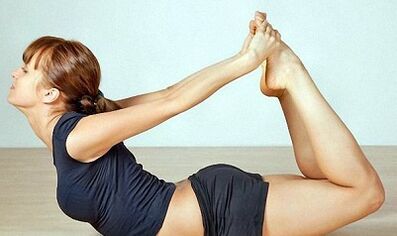
The body needs a moderate amount of fat reserves.Health deteriorates when too much fat accumulates.You need to follow various diets and perform specific exercises to lose weight.
If you focus your efforts and help your body, working with it at the same time, you can naturally maintain a lean body and excellent health.
Why does the body need fat?
Fat stores help to obtain the necessary vitamins A, D, E, K. Fat deposits focus on energy reserves.The fat layer protects internal organs from mechanical damage, shock and injury.
Many people, in order to lose weight and burn excess fat, restrict their diet and follow popular diets.Lack of nutrients reduces weight and at the same time causes weakness and loss of strength.
To get rid of excessive fat reserves and achieve a slim body, you should adjust your diet and at the same time give your body enough exercise by performing regular weight loss exercises.Under these conditions, fat begins to break down.
If you are overweight, you should make sure your thyroid is healthy.If its effectiveness is insufficient, it is difficult or impossible to remove subcutaneous fat.
Proper nutrition for weight loss
When food is completely digested and absorbed, the rate of metabolic processes increases and energy consumption increases.As a result, you manage to lose weight.
When poorly mixed food is consumed, metabolic responses are inadequate.Undigested substances accumulate in fat cells and cause putrefaction and fermentation in the intestines.
Some people use diuretics or laxatives to lose weight.If used incorrectly, these drugs interfere with natural digestion, causing weight gain.
To restore strength and avoid chronic fatigue, the body needs carbohydrates after a hard workout.They are rich in dairy products, legumes, oranges, pineapples, bananas, grapes, pears, dried apricots and raspberries.
How to do exercises correctly to lose weight
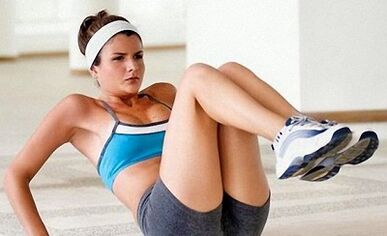
During regular training, body weight is reduced because sports practice creates a caloric deficit.Fat stores and carbohydrates are consumed at the same time.
When training at a low intensity, more fat is burned in one session than carbohydrates.But the rate of calorie consumption is low, about 4-5 kcal per minute.
Therefore, if your fitness allows, you should perform the exercises more intensively to lose weight faster due to higher calorie consumption, about 10-12 kcal per minute.
Even though intense exercise burns less fat than carbs as a percentage, the total amount of fat burned is greater than low-intensity weight loss exercises.
To reduce weight by 1 kg, you need to burn about 8000 kcal.
When putting together exercises for weight loss, it is necessary to take into account the amount of excess fat and physical activity.
Beginners and overweight people should start training at a low intensity.To achieve similar results to shorter intense training, sports movements need to be performed 2-3 times longer.
A set of exercises to lose weight should start with a warm-up and end with a cool-down.
During the warm-up, it is necessary to perform movements at a slow speed, with minimal stress, to properly warm up the muscles, prepare the joints for stress, lower blood pressure and increase blood flow.
After training, cooling down is necessary: gradually reduce the speed, normalize the heart rate.It is helpful to bend and swing the arms, which restores blood circulation in the body, especially after putting stress on the legs.Stagnation of blood in the lower limbs is especially dangerous in the case of varicose veins or thrombophlebitis.
Which muscles should be loaded to lose weight faster?
When creating a unique set of exercises for weight loss, the first thing you should do is load your legs.These sports movements require the consumption of maximum calories.
In terms of the effectiveness of burning fat reserves, they are inferior to exercises for the back, pectoral muscles, shoulders and arms.
The last thing you should do is load your abdominal muscles, as their contractions burn the least amount of calories.
Exercise for weight loss
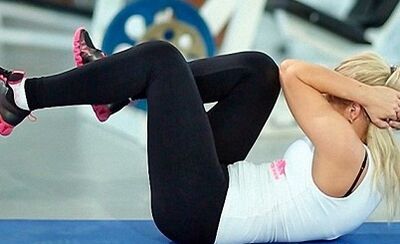
To lose fat, aerobic exercise is useful: running, swimming, cycling.During active movements, enzymes are formed - protein molecules that speed up reactions in the body and help it lose weight.
Aerobic training stimulates the activity of mitochondria, the powerhouse of cells.Mitochondria oxidize organic substances and use the released energy to create ATP molecules, the energy carrier within the cell.
If strength training with dumbbells burns fat only after the release of the corresponding hormones 30-40 minutes after the end of the workout, then aerobic exercises allow you to lose weight during the workout.
First, the body uses up carbohydrate reserves from the blood and liver.After half an hour they finish, begin to consume fat under the skin and inside.
To achieve success as quickly as possible, a certain amount of training is required.To track your progress without overdoing it, you need to measure your heart rate (HR), or "pulse."
During exercise, fat is burned most efficiently if your heart rate is between 65%...85% of the maximum rate for your age.
The maximum frequency is determined by a simple formula: 200 minus age.
So at the age of 35 the maximum heart rate will be 200 – 35 = 165 beats per minute.During training, the heart should contract at a rate of 107 (165*0.65=107) to 140 (165*0.85=140) beats per minute.
One lesson should take about one hour.It is best to exercise 3-4 times a week.
The simplest exercise that gives your body aerobic exercise is jogging.Aerobic sports movements performed to rhythmic music are no less effective.
Similar results can be achieved with the help of home exercise machines - cycling, running, rowing.
Benefits of walking and running
If you are overweight or obese, you should do a simple exercise to lose weight - walk at a moderate pace so that your heart beats at the best rate for your age.
You should start with a 20-minute walk.By walking three times a week, after a month or two, you will be able to make some progress.
Then you can increase the length of each walk to 45-50 minutes, increase their number.
If your fitness is high enough and walking can't reach your recommended heart rate, you should start jogging.
As your training level increases, you need to increase the distance by 10%.
To avoid injuring your joints, you should perform this weight loss exercise in the park and run on the ground, not on the asphalt.
Using a bicycle or rowing machine
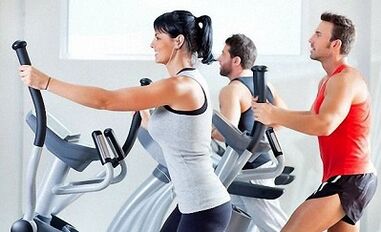
The undoubted advantage of home exercise equipment is the presence of sensors that allow you to monitor your heart rate during exercise.
By exercising regularly on a bicycle or rowing machine, you can get maximum health benefits and lose weight.It is important not to forget to increase the stress on the muscles as your athletic ability increases.
Unlike a cycling machine, which puts stress primarily on the legs, a rowing machine forces the back, arms, abdomen and, to a lesser extent, the legs to work.
Using two exercise equipment together has a greater fat burning effect.That's why you should alternate between bicycle and rowing machine exercises to lose more weight.
Exercises to lose belly fat
Even if your body fat is low, your stomach can protrude and sag due to weak abdominal muscles.
When performing exercises, you should maintain balance.The load should be enough to make the muscles stronger.Light exercises, even repeated many times, will not produce results.
To develop the rectus abdominis muscles and lose weight, it is useful to perform the following exercises:
- Sit on a chair and fix your legs, bend back, try to touch the floor with outstretched arms.
- Sit on an exercise mat with your arms supporting your torso from behind.Raise the closed legs as high as possible.
- The starting position is the same.Lift each leg separately.
- Lie on the mat, put your palms under your head.Bend your legs, touch your chest with your knees, stretch your legs vertically up, return to the starting position.
- Lie down with your arms along your body.Raise and lower the right leg to a vertical position.
- Lie down, raise and lower each right leg separately into a vertical position, imitating "scissors".
- Lie down, lift your right leg 30 cm from the floor.Perform "scissors" in a horizontal plane.
- After attaching the legs, raise the torso to a vertical position.The hands are clasped behind the head.
During classes, it is useful to perform 3-4 exercises from this complex.To lose weight, up to 15 repetitions are enough.
Exercises to slim legs - thighs and calves
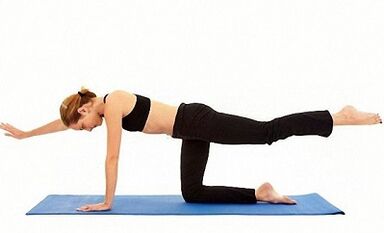
To reduce fat deposits on the legs, it is useful to squat down slowly and return to the starting position.The hands are clasped behind the head or at the waist, the back is straight, the feet are shoulder width apart.
To increase the load, hold your hand behind the doorway and lean on one leg, keeping the other parallel to the floor.
To develop leg muscles, move in a goose-stepping position, with your palms on your belt or the back of your head.
Muscles in the legs and thighs are strengthened by swinging the right leg alternately up and to the side from a position on all fours.
To develop the calf muscles, shift your body weight from heel to toe, holding onto a wall or door to maintain balance.First, perform the exercise while standing on both feet.As training increases, use the other leg.
Exercises to lose weight on the butt
To strengthen the gluteal muscles, it is useful to include the following exercises in the training complex:
- In a standing position, feet shoulder-width apart, palms on the waist, perform circular movements with the hips.
- While standing, lift the leg bent at the knee as high as possible, move it to the side and return to the starting position.Repeat for the other leg.
- Get on your knees, hips and back in a row.Sit down and touch the floor to the left of your feet with your butt, return to the starting position, touch the floor to the right of your feet.
- Sit on the floor, legs extended in front, torso in an upright position.Go forward on your butt.
- Lie on your back, bend your legs, arms along your body.Lift your pelvis off the floor, leaning on your feet and shoulders.
Perform each exercise up to 15 times.














































































